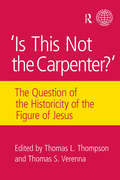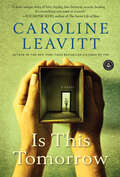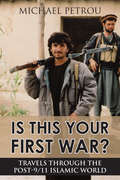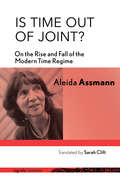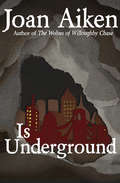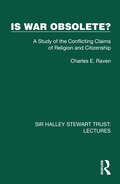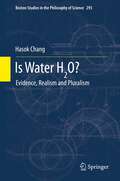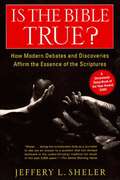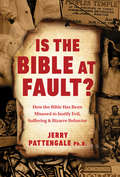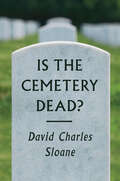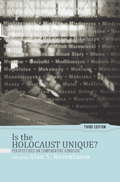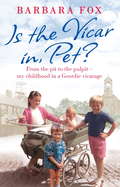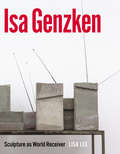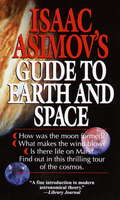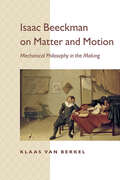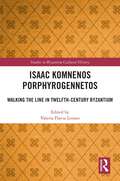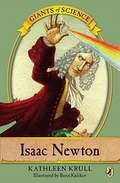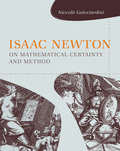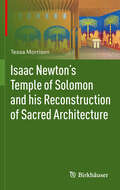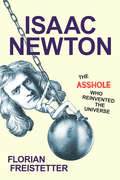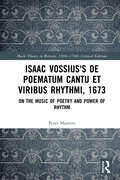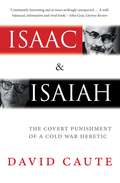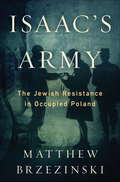- Table View
- List View
Is This Not The Carpenter?: The Question of the Historicity of the Figure of Jesus
by Thomas L. Thompson Thomas S. VerennaThe historicity of Jesus is now widely accepted and hardly questioned by most scholars. But this assumption disarms biblical texts of much of their power by privileging an historical interpretation which effectively sweeps aside much theological speculation and allusion. Furthermore, the assumption of historicity gathers further assumptions to it, shaping the interpretation of texts, both denying and adding subtext. Scholars are now faced with an endless array of works on the historical Jesus and few question what has been lost through this wide-spread assumption of historicity. Is This Not the Carpenter? presents a very valuable corrective: a literary rereading of the New Testament.
Is This Tomorrow: A Novel
by Caroline LeavittIn 1956, Ava Lark rents a house with her twelve-year-old son, Lewis, in a desirable Boston suburb. Ava is beautiful, divorced, Jewish, and a working mom. <P><P>She finds her neighbors less than welcoming. Lewis yearns for his absent father, befriending the only other fatherless kids: Jimmy and Rose. <P>One afternoon, Jimmy goes missing. The neighborhood—in the throes of Cold War paranoia—seizes the opportunity to further ostracize Ava and her son.Years later, when Lewis and Rose reunite to untangle the final pieces of the tragic puzzle, they must decide: Should you tell the truth even if it hurts those you love, or should some secrets remain buried?
Is This Your First War?: Travels Through the Post-9/11 Islamic World
by Michael PetrouA leading journalist travels through the hot spots of the Middle East and Central Asia, from Pakistan and Afghanistan to Syria and Egypt. Winner of the Ottawa Book Award for English Non-Fiction, 2013 Less than a year before 9/11, Michael Petrou trekked through al Qaeda’s backyard in the Tribal Areas of Pakistan. He was back in Central Asia within weeks of the attacks – this time as a reporter, slipping into Afghanistan as rockets and tracer bullets lit up the night sky, carrying notebooks, stolen blankets, and a satellite phone. In the decade that followed, Petrou has returned repeatedly to the greater Middle East, where political Islam, liberalism, ethnic and religious nationalism, and Western military intervention shape and batter the lives of those who live there. In the process, Petrou has established himself as one of Canada’s premier foreign correspondents. Petrou details a world in the midst of great turmoil and tells the stories of people who have long been held down by dictatorship and extremism and who are finally beginning to shake themselves free.
Is Time out of Joint?: On the Rise and Fall of the Modern Time Regime (signale|TRANSFER: German Thought in Translation)
by Aleida AssmannIs, as Hamlet once complained, time out joint? Have the ways we understand the past and the future—and their relationship to the present—been reordered? The past, it seems, has returned with a vengeance: as aggressive nostalgia, as traumatic memory, or as atavistic origin narratives rooted in nation, race, or tribe. The future, meanwhile, has lost its utopian glamor, with the belief in progress and hope for a better future eroded by fears of ecological collapse.In this provocative book, Aleida Assmann argues that the apparently solid moorings of our temporal orientation have collapsed within the span of a generation. To understand this profound cultural crisis, she reconstructs the rise and fall of what she calls "time regime of modernity" that underpins notions of modernization and progress, a shared understanding that is now under threat. Is Time Out of Joint? assesses the deep change in the temporality of modern Western culture as it relates to our historical experience, historical theory, and our life-world of shared experience, explaining what we have both gained and lost during this profound transformation.
Is Underground (The Wolves Chronicles #8)
by Joan AikenThe children of London are disappearing—can Is solve the mystery before she vanishes too? Is Twite, younger sister of the daring Dido, is on a desperate mission. An uncle she never knew just showed up at the cottage she shares with her sister Penny. He is being pursued by ravening wolves, and before he dies, the uncle begs her to find his missing son—Is&’s cousin, Arun. The quest takes Is to London—a city mysteriously devoid of children, including the king&’s only son and heir. Is soon finds herself aboard the Playland Express, a secret midnight train that leaves town once a month, just before the new moon. The kids aboard believe they&’re headed to a far-off kingdom filled with fun and games. In reality, Playland is a freezing underground city ruled by the greedy &“Gold Kingy,&” who has lured the youngsters there under false pretenses. His real objective is to put them to work in the coal mines. But the worst is yet to come: Gold Kingy is none other than Is&’s other uncle Roy! Now it&’s up to Is to avoid a terrible fate and use her wits, ingenuity, and powers of telepathic communication to free the children. Is Underground is the 8th book in the award-winning Wolves Chronicles, but you may enjoy reading the series in any order. This ebook features an illustrated personal history of Joan Aiken including rare images from the author&’s estate.
Is War Obsolete?: A Study of the Conflicting Claims of Religion and Citizenship (Sir Halley Stewart Trust: Lectures)
by Charles E. RavenOriginally published in 1935, this volume Is War Obsolete? A Study of the Conflicting Claims of Religion and Citizenship is based on the Halley Stewart Lectures presented in 1934 and examines the responsibility of Christians for peace. It aims to reconsider the basis of Christian Pacifism and to appeal to those in the Churches to make up their minds on the issue and to act upon their decisions. The approach is that of the individual rather than the community, and of religion and ethics more than politics or philosophy.This book is a re-issue originally published in 1935. The language used and views portrayed are a reflection of its era and no offence is meant by the Publishers to any reader by this re-publication.
Is Water H2O?
by Hasok ChangThis book exhibits deep philosophical quandaries and intricacies of the historical development of science lying behind a simple and fundamental item of common sense in modern science, namely the composition of water as H2O. Three main phases of development are critically re-examined, covering the historical period from the 1760s to the 1860s: the Chemical Revolution (through which water first became recognized as a compound, not an element), early electrochemistry (by which water's compound nature was confirmed), and early atomic chemistry (in which water started out as HO and became H2O). In each case, the author concludes that the empirical evidence available at the time was not decisive in settling the central debates, and therefore the consensus that was reached was unjustified, or at least premature. This leads to a significant re-examination of the realism question in the philosophy of science, and a unique new advocacy for pluralism in science. Each chapter contains three layers, allowing readers to follow various parts of the book at their chosen level of depth and detail. The second major study in "complementary science", this book offers a rare combination of philosophy, history and science in a bid to improve scientific knowledge through history and philosophy of science.
Is the Bible True?: How Modern Debates and Discoveries Affirm the Essence of the Scriptures
by Jeffery L. ShelerA Christianity Today Book of the Year: “An excellent book for anyone interested in the Bible both as a work of history and a testament of faith.” —Publishers WeeklyIn this authoritative, bold, and balanced book, renowned U.S. News & World Report religion writer Jeffrey L. Sheler sifts through the claims and counterclaims of contemporary biblical studies. After carefully investigating the full spectrum of cutting-edge research and conflicting reports, he challenges the popular perception that the credibility of the Bible has been seriously undermined by critical scholarship. Rather, he concludes that the weight of the historical evidence upholds the essential truth of Exodus, the Gospel accounts of Jesus, and other vital elements of the Bible. The author draws extensively from his own interviews with leading Bible experts and on-site reports from Israel and Egypt in his examination of scholarship’s hot-button issues, including: *Dramatic archaeological discoveries that both affirm and challenge the history in the Bible *The controversial quest for the historical Jesus and its sometimes-flawed arguments and skeptical assumptions regarding the reliability of the Gospels*The amazing revelations of the Dead Sea Scrolls and other ancient texts that profoundly influence our understanding of the Bible*The mysterious phenomenon of the Bible Code and why there may be far less to its doomsday prophecies than meets the eyeWritten in clear, compelling prose, Is the Bible True? presents a sophisticated analysis informed by important scholarly work in lucid, accessible terms.
Is the Bible at Fault?: How the Bible Has Been Misused to Justify Evil, Suffering and Bizarre Behavior
by Jerry Pattengale Daniel Freemyer Nicholas DeNeffThis provocative new book provides the truth and perspective needed to remind us of how high the stakes can be when we get the Bible wrong. Throughout history and around the world, people have made bizarre or dangerous claims in the name of God. They continue to do so today, citing biblical passages out of context or inappropriately. Doing so has led to a wide range of disasters, from executing other Christians for theological differences, to wild activities in the name of evangelism, and more. Is the Bible at Fault? examines these historical errors, problematic biblical interpretations, and tragedies to reveal how and why the Bible has been misused to justify and rationalize profound acts of persecution, destruction, violence, human rights abuse, and downright strange behavior.Is the Bible at Fault? explores twelve different cases of abhorrent behavior in the name of Scripture. These terrible, destructive movements have led people astray, brought irreparable spiritual and emotional harm, and even cost countless people their lives. The members of the Ku Klux Klan had no doubt that their actions were justified in the eyes of God. The murderous armies of the Fourth Crusade rationalized slaying other Christians in the name of the church. Detroit’s Prophet Jones locked his followers in all-night revival meetings and often wouldn’t let them out until they made financial contributions to the cause—the cause being his lavish lifestyle. Some Christian missionaries not only condoned the wholesale slaughter of Australia’s native Aborigines people, they participated in it—with a clean conscience. These are real, historical people and events, and we’ll explore every one of them and more in these pages.
Is the Cemetery Dead?
by David Charles SloaneIn modern society, we have professionalized our care for the dying and deceased in hospitals and hospices, churches and funeral homes, cemeteries and mausoleums to aid dazed and disoriented mourners. But these formal institutions can be alienating and cold, leaving people craving a more humane mourning and burial process. The burial treatment itself has come to be seen as wasteful and harmful—marked by chemicals, plush caskets, and manicured greens. Today’s bereaved are therefore increasingly turning away from the old ways of death and searching for a more personalized, environmentally responsible, and ethical means of grief. Is the Cemetery Dead? gets to the heart of the tragedy of death, chronicling how Americans are inventing new or adapting old traditions, burial places, and memorials. In illustrative prose, David Charles Sloane shows how people are taking control of their grief by bringing their relatives home to die, interring them in natural burial grounds, mourning them online, or memorializing them streetside with a shrine, ghost bike, or RIP mural. Today’s mourners are increasingly breaking free of conventions to better embrace the person they want to remember. As Sloane shows, these changes threaten the future of the cemetery, causing cemeteries to seek to become more responsive institutions. A trained historian, Sloane is also descendent from multiple generations of cemetery managers and he grew up in Syracuse’s Oakwood Cemetery. Enriched by these experiences, as well as his personal struggles with overwhelming grief, Sloane presents a remarkable and accessible tour of our new American way of death.
Is the Holocaust Unique?
by Alan S RosenbaumIn essays written specifically for this volume, distinguished contributors assess highly charged and fundamental questions about the Holocaust: Is it unique? How can it be compared with other instances of genocide? What constitutes genocide, and how should the international community respond? On one side of the dispute are those who fear that if the Holocaust is seen as the worst case of genocide ever, its character will diminish the sufferings of other persecuted groups. On the other side are those who argue that unless the Holocaust's uniqueness is established, the inevitable tendency will be to diminish its abiding significance. The editor's introductions provide the contextual considerations for understanding this multidimensional dispute and suggest that there are universal lessons to be learned from studying the Holocaust. The third edition brings this volume up to date and includes new readings on the Cambodian and Rwandan genocides, common themes in genocide ideologies, and Iran's reaction to the Holocaust. In a world where genocide persists and the global community continues to struggle with the implications of international crime, prosecution, justice, atonement, reparation, and healing, the issues addressed in this book are as relevant as ever.
Is the Vicar in, Pet?: From the Pit to the Pulpit – My Childhood in a Geordie Vicarage
by Barbara FoxIn the heart of Ashington - a bustling Geordie mining town - a handsome red-brick vicarage, surrounded by rambling gardens, stands proudly among the rows of terraced houses. It is the perfect place for playing games, keeping secrets and chasing the ghosts of previous occupants, and it will be nine-year-old Barbara's new home now that her father is to be vicar in this strange new place. In this charming memoir, Barbara Fox recalls a childhood where parishioners knocked on the door at all hours of the day and night, and where no one batted an eye at the collection of waifs and strays who regularly joined the family at the kitchen table. This is a warm-hearted, classic tale of family, community and the unforgettable thrill of childhood adventure.
Is the Vicar in, Pet?: From the Pit to the Pulpit – My Childhood in a Geordie Vicarage
by Barbara FoxIn the heart of Ashington - a bustling Geordie mining town - a handsome red-brick vicarage, surrounded by rambling gardens, stands proudly among the rows of terraced houses. It is the perfect place for playing games, keeping secrets and chasing the ghosts of previous occupants, and it will be nine-year-old Barbara's new home now that her father is to be vicar in this strange new place. In this charming memoir, Barbara Fox recalls a childhood where parishioners knocked on the door at all hours of the day and night, and where no one batted an eye at the collection of waifs and strays who regularly joined the family at the kitchen table. This is a warm-hearted, classic tale of family, community and the unforgettable thrill of childhood adventure.
Isa Genzken: Sculpture as World Receiver
by Lisa LeeThe work of German sculptor Isa Genzken is brilliantly receptive to the ever-shifting conditions of modern life. In this first book devoted to the artist, Lisa Lee reflects on Genzken’s tendency to think across media, attending to sculptures, photographs, drawings, and films from the entire span of her four-decade career, from student projects in the mid-1970s to recent works seen in Genzken’s studio. Through penetrating analyses of individual works as well as archival and interview material from the artist herself, Lee establishes four major themes in Genzken’s oeuvre: embodied perception, architecture and built space, the commodity, and the body. Contextualizing the sculptor’s engagement with fellow artists, such as Joseph Beuys and Bruce Nauman, Lee situates Genzken within a critical and historical framework that begins in politically fraught 1960s West Germany and extends to the globalized present. Here we see how Genzken tests the relevance of the utopian aspirations and formal innovations of the early twentieth century by submitting them to homage and travesty. Sure to set the standard for future studies of Genzken’s work, Isa Genzken is essential for anyone interested in contemporary art.
Isaac Asimov's Guide to Earth and Space
by Isaac AsimovA wide-ranging exploration of our universe -- from "what makes the wind blow?" to "how was the moon formed?" -- in questions-and-answer format, written in vintage Asimov style. "A fine introduction to modern astronomical theory." -- LIBRARY JOURNALFrom the Paperback edition.
Isaac Beeckman on Matter and Motion: Mechanical Philosophy in the Making
by Klaas van BerkelExplore the work of a founding father of the mechanical philosophy of nature, Isaac Beeckman (1588–1637).The contribution of the Dutch craftsman and scholar Isaac Beeckman to early modern scientific thought has never been properly acknowledged. Surprisingly free from the constraints of traditional natural philosophy, he developed a view of the world in which everything, from the motion of the heavens to musical harmonies, is explained by reducing it to matter in motion. His ideas deeply influenced Descartes and Gassendi. Klaas van Berkel has succeeded in unearthing and explicating Beeckman's scientific notebooks, allowing us to follow how he developed his new philosophy, almost day by day.Beeckman was almost forgotten until the discovery of his notebooks in the early twentieth century. Isaac Beeckman on Matter and Motion is the first full-length study of the ideas and motives of this remarkable figure. Van Berkel's important study first relates Beeckman's life, placing him in the religious, intellectual, educational, and social context of the Dutch Republic in its golden age. Van Berkel then analyzes the notebooks themselves and the nature and development of Beeckman's "mechanical philosophy." He demonstrates how Beeckman's artisanal background and religious convictions shaped his natural philosophy, even as the decisive influence stems from the educational philosophy of the sixteenth-century French philosopher Peter Ramus. Historians of science and the philosophy of science will find the substance of Beeckman's thought and the unraveling of its growth and development highly interesting. Van Berkel's account provides a new and comprehensive interpretation of the origins of the mechanical philosophy of nature, the philosophy that culminated in the work of Isaac Newton.
Isaac Komnenos Porphyrogennetos: Walking the Line in Twelfth-Century Byzantium (Studies in Byzantine Cultural History)
by Valeria Flavia LovatoTwelfth-century Byzantium is characterized by a striking artistic vitality and profound socio-political changes. The Constantinopolitan elites, led by the Komnenian dynasty initiated by Alexios I, were the driving force behind the renewed intellectual landscape and power dynamics of the century. Despite the wealth of studies devoted to the Komnenians, the sebastokrator Isaac (1093–after 1152) has received limited attention in modern scholarship.Yet, Isaac is a fascinating figure at the crossroads of different worlds. He was an intellectual, the author of the first running commentary on the Iliad ever written in Byzantium. He was a patron, sponsoring magnificent buildings and supporting artists in and outside the capital. He was a would-be usurper, attempting to seize the throne several times. He was a shrewd diplomat, forging alliances with Armenian, Turkish, and Latin rulers.Modern scholars have so far failed to see the interplay between Isaac’s multiple personae. Isaac the scholar is rarely brought into conversation with Isaac the usurper, Isaac the patron, or Isaac the world traveller. Bringing together experts from a range of disciplines, this book fills a significant gap in the literature. As the first comprehensive study of one of the protagonists of the Komnenian era, it is essential reading for students of the Byzantine Empire. In addition, the portrait of Isaac presented here provides scholars of pre-modern civilizations with a relevant case study. By exposing the permeability of the theoretical and geographical ‘borders’ we use to conceptualize the past, Isaac epitomizes the interconnectedness at the heart of the so-called Global Middle Ages.
Isaac Newton
by Andrew Janiak Isaac NewtonSir Isaac Newton (1642-1727) left a voluminous legacy of writings. Despite his influence on the early modern period, his correspondence, manuscripts, and publications in natural philosophy remain scattered throughout many disparate editions. In this volume, Newton's principal philosophical writings are for the first time collected in a single place. They include excerpts from the Principia and the Opticks, his famous correspondence with Boyle and with Bentley, and his equally significant correspondence with Leibniz, which is often ignored in favor of Leibniz's later debate with Samuel Clarke. Newton's exchanges with Leibniz place their different understandings of natural philosophy in sharp relief. The volume also includes 'De Gravitatione', offered here in a corrected translation, which is crucial for understanding Newton's relation to his great predecessor Descartes. In a historical and philosophical introduction, Andrew Janiak examines Newton's philosophical positions and his relations to canonical figures in early modern philosophy.
Isaac Newton
by Kathleen KrullHere is a man with an imagination so large that just ?by thinking on it,? he invented calculus and figured out the scientific explanation of gravity. Kathleen Krull presents a portrait of Isaac Newton that will challenge your beliefs about a genius whose amazing discoveries changed the world. .
Isaac Newton on Mathematical Certainty and Method (Transformations: Studies in the History of Science and Technology)
by Niccolo GuicciardiniAn analysis of Newton's mathematical work, from early discoveries to mature reflections, and a discussion of Newton's views on the role and nature of mathematics.Historians of mathematics have devoted considerable attention to Isaac Newton's work on algebra, series, fluxions, quadratures, and geometry. In Isaac Newton on Mathematical Certainty and Method, Niccolò Guicciardini examines a critical aspect of Newton's work that has not been tightly connected to Newton's actual practice: his philosophy of mathematics. Newton aimed to inject certainty into natural philosophy by deploying mathematical reasoning (titling his main work The Mathematical Principles of Natural Philosophy most probably to highlight a stark contrast to Descartes's Principles of Philosophy). To that end he paid concerted attention to method, particularly in relation to the issue of certainty, participating in contemporary debates on the subject and elaborating his own answers. Guicciardini shows how Newton carefully positioned himself against two giants in the “common” and “new” analysis, Descartes and Leibniz. Although his work was in many ways disconnected from the traditions of Greek geometry, Newton portrayed himself as antiquity's legitimate heir, thereby distancing himself from the moderns. Guicciardini reconstructs Newton's own method by extracting it from his concrete practice and not solely by examining his broader statements about such matters. He examines the full range of Newton's works, from his early treatises on series and fluxions to the late writings, which were produced in direct opposition to Leibniz. The complex interactions between Newton's understanding of method and his mathematical work then reveal themselves through Guicciardini's careful analysis of selected examples. Isaac Newton on Mathematical Certainty and Method uncovers what mathematics was for Newton, and what being a mathematician meant to him.
Isaac Newton's Temple of Solomon and his Reconstruction of Sacred Architecture
by Tessa MorrisonThis book is about a side of Isaac Newton's character that has not been examined - Isaac Newton as architect as demonstrated by his reconstruction of Solomon's Temple. Although it is well known that Isaac Newton worked on the Temple, and this is mentioned in most of his biographies and in articles on the religious aspects of this work, however, there is no research on Newton's architectural work. This book not only recreates Newton's reconstruction of the Temple but it also considers how his work on the Temple interlinks with his other interests of science, chronology, prophecy and theology. In addition the book contains the first translation of Introduction to the Lexicon of the Prophets, Part two: About the appearance of the Jewish Temple commonly known by its call name Babson 0434. This work will appeal not only to scholars of science and architectural history but also to scholars of the seventeenth and eighteenth centuries' history of ideas.
Isaac Newton, The Asshole Who Reinvented the Universe: The Asshole Who Reinvented The Universe
by Brian Taylor Florian FreistetterA blunt and humorous profile of Isaac Newton focusing on his disagreeable personality and showing that his offputting qualities were key to his scientific breakthroughs.Isaac Newton may have been the most important scientist in history, but he was a very difficult man. Put more bluntly, he was an asshole, an SOB, or whatever epithet best describes an abrasive egomaniac. In this colorful profile of the great man--warts and all--astronomer Florian Freistetter shows why this damning assessment is inescapable.Newton's hatred of fellow scientist Robert Hooke knew no bounds and he was strident in expressing it. He stole the work of colleague John Flamsteed, ruining his career without a second thought. He carried on a venomous battle with Gottfried Wilhelm Leibniz over the invention of calculus, vilifying him anonymously while the German scientist was alive and continuing the attacks after he died. All evidence indicates that Newton was conniving, sneaky, resentful, secretive, and antisocial. Compounding the mystery of his strange character is that he was also a religious fanatic, a mystery-monger who spent years studying the Bible and predicted the apocalypse.While documenting all of these unusual traits, the author makes a convincing case that Newton would have never revolutionized physics if he hadn't been just such an obnoxious person. This is a fascinating character study of an astounding genius and--if truth be told--an almighty asshole as well.
Isaac Vossius's De poematum cantu et viribus rhythmi, 1673: On the Music of Poetry and Power of Rhythm (Music Theory in Britain, 1500–1700: Critical Editions)
by Peter MartensDr Peter Martens provides the first complete edited English translation of, and commentary on, Issac Vossius’s De poematum cantu et viribus rythmi, a late seventeenth-century work of Continental musical humanism, all the more interesting for being published in England and dedicated to royalist Henry Bennett, Duke of Arlington. This treatise plays an important but poorly understood role in the continued development of rhythmopoeia; Vossius continues the arguments of figures such as Vincenzo Galilei and Marin Mersenne - desiring to link linguistic rhythm, music, and the passions - by proposing a practical, if undemonstrated, method for doing so based on ancient poetic feet. This resuscitation of poetic feet in the service of affect is made explicit by Vossius, but is undoubtedly more familiar to musicologists from Wolfgang Caspar Printz's 1696 Phrynis Mitilenaeus or Johann Mattheson's 1739 Der vollkommene Capellmeister. Vossius, or more correctly, De poematum cantu, was often cited during the century after its publication, and no modern treatment of rhythmopoeia seems complete without a citation or short excerpt from this work. There is little secondary literature that focuses on this treatise, but what does exist links this work directly to John Dryden's composition of his 1687 and 1697 St. Cecilia odes, and their musical settings by Giovanni Battista Draghi and Jeremiah Clarke, respectively. In Dean Mace and H. Neville Davies' debate over the extent of Vossius's influence on these works can be found a rich picture of the contentious issues surrounding text-setting and musical affect that so occupied a great many writers in late-seventeenth-century England. A full translation and accompanying discussion of Vossius's own sources and musical influences allows English-language students and scholars to access and study this work in the depth and to the degree it deserves.
Isaac and Isaiah
by David CauteRancorous and highly public disagreements between Isaiah Berlin and Isaac Deutscher escalated to the point of cruel betrayal in the mid-1960s, yet surprisingly the details of the episode have escaped historians' scrutiny. In this gripping account of the ideological clash between two of the most influential scholars of Cold War politics, David Caute uncovers a hidden story of passionate beliefs, unresolved antagonism, and the high cost of reprisal to both victim and perpetrator.Though Deutscher (1907-1967) and Berlin (1909-1997) had much in common--each arrived in England in flight from totalitarian violence, quickly mastered English, and found entry into the Anglo-American intellectual world of the 1950s--Berlin became one of the presiding voices of Anglo-American liberalism, while Deutscher remained faithful to his Leninist heritage, resolutely defending Soviet conduct despite his rejection of Stalin's tyranny. Caute combines vivid biographical detail with an acute analysis of the issues that divided these two icons of Cold War politics, and brings to light for the first time the full severity of Berlin's action against Deutscher.
Isaac's Army: A Story of Courage and Survival in Nazi-Occupied Poland
by Matthew BrzezinskiStarting as early as 1939, disparate Jewish underground movements coalesced around the shared goal of liberating Poland from Nazi occupation. For the next six years, separately and in concert, they waged a heroic war of resistance against Hitler's war machine that culminated in the Warsaw Ghetto Uprising. In Isaac's Army, Matthew Brzezinski delivers the first-ever comprehensive narrative account of that struggle, following a group of dedicated young Jews--some barely out of their teens--whose individual acts of defiance helped rewrite the ending of World War II. Based on first-person accounts from diaries, interviews, and surviving relatives, Isaac's Army chronicles the extraordinary triumphs and devastating setbacks that befell the Jewish underground from its earliest acts of defiance in 1939 to the exodus to Palestine in 1946. This is the remarkable true story of the Jewish resistance from the perspective of those who led it: Isaac Zuckerman, the confident and charismatic twenty-four-year-old founder of the Jewish Fighting Organization; Simha Ratheiser, Isaac's fifteen-year-old bodyguard, whose boyish good looks and seeming immunity to danger made him an ideal courier; and Zivia Lubetkin, the warrior queen of the underground who, upon hearing the first intimations of the Holocaust, declared: "We are going to defend ourselves." Joined by allies on the left and right, they survived Gestapo torture chambers, smuggled arms, ran covert printing presses, opened illegal schools, robbed banks, executed collaborators, and fought in the two largest rebellions of the war. Hunted by the Germans and bedeviled by the "Greasers"--roving bands of blackmailers who routinely turned in resistance fighters for profit--the movement was chronically short on firepower but long on ingenuity. Its members hatched plots in dank basements, never more than a door knock away from summary execution, and slogged through fetid sewers to escape the burning Ghetto to the forests surrounding the city. And after the initial uprising was ruthlessly put down by the SS, they gambled everything on a bold plan for a citywide revolt--of both Jews and Gentiles--that could end only in victory or total destruction. The money they raised helped thousands hide when the Ghetto was liquidated. The documents they forged offered lifelines to families desperate to escape the horror of the Holocaust. And when the war was over, they helped found the state of Israel. A story of secret alliances, internal rivalries, and undying commitment to a cause, Isaac's Army is history at its most heart-wrenching. Driven by an unforgettable cast of characters, it's a true-life tale with the pulse of a great novel, and a celebration of the indomitable spirit of resistance.Advance praise for Isaac's Army "Told with care and compassion, Matthew Brzezinski's Isaac's Army is a riveting account of the Jewish resistance in wartime Poland. This is an intense story that transcends the horror of the time and finds real inspiration in the bravery of those who fought back--some of whom lived to tell their stories. Highly recommended."--Alan Furst, author of Mission to ParisFrom the Hardcover edition.
